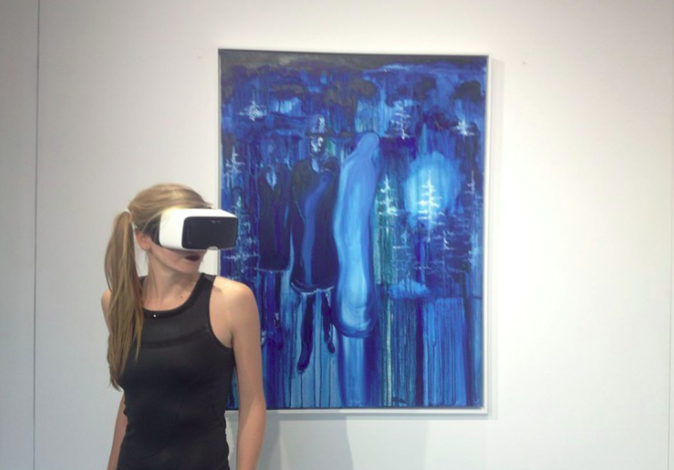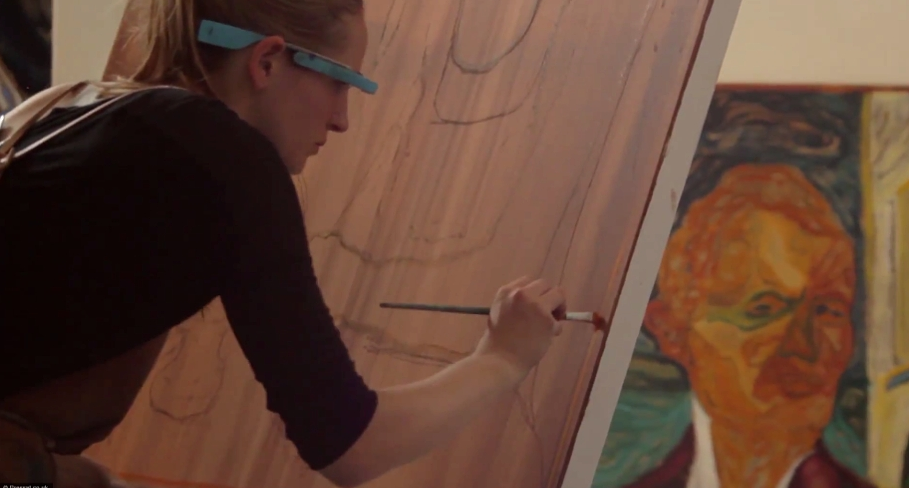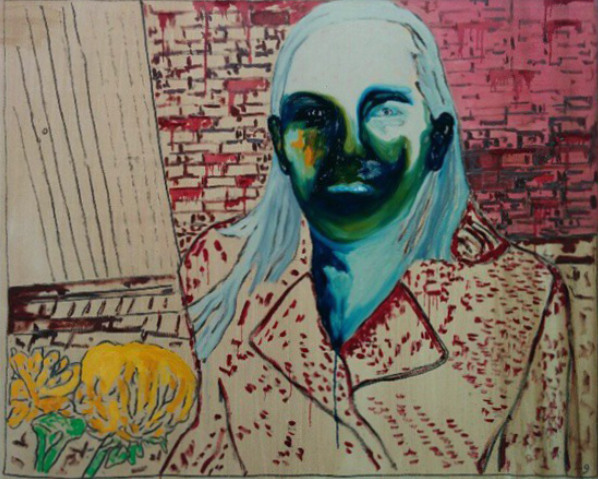
Pigment As Pixel: art and the self
Visit the world’s first Virtual Reality art exhibition, Gretchen’s upcoming Art & Virtual Reality Exhibit – Pigment As Pixel.
Friday, 17 April 2015 at 11:00 – Sunday, 19 April 2015 at 20:00 (BST)
Hoxton Gallery, 9 Kingsland Road, E2 8AA, London
In middle school I was not cool or confident or popular, but every time I boarded the bus to summer camp I knew that the other campers didn’t know that. Freedom; I could be whoever I wanted. I was eleven and already identifying the internet as offering a similar opportunity. With a frightening lack of parental supervision I began cultivating the digital as an extension of myself. I had a correspondence with an academic who helped me prepare my Joan of Arc prosecution for history class. Online forums about alien encounters were another favourite of mine. There was little Gretchen, the me that depended on context: my age, my lack of social standing, my teeth that desperately needed braces. Then there was the me that, at what seems like a disconcertingly young age, found self online.
Now that adults know how the internet works parents will not let their kids do this, but I was curious and maybe also lucky. Before profiles there were screen names, and screen names didn’t need to be rooted to physically established identity or “real name policies.” Unlike profiles, screen names were often masks chosen and carefully cultivated. It was self without reference to the body: ageless, sexless, raceless.
Art used to be confined to object as idol. To experience the art you had no choice but to be near the object. There was supposedly something special and fetishized within the material. This is why idolatry-sensitive Protestant traditions are less visual than Catholic, and why their services are housed in plain buildings instead of cathedrals.
Similarly, the self is often felt to center on the body, but our bodies are such poor manifestations of ourselves. You have cancer but you are not cancer. If our tonsils or appendix are removed we feel no loss of self. How much does your body even say about you? Do you have runner’s legs or the finger tips of a guitarist? How limiting. How oblivious to the complexity.
Just as art can be objectless, through digital the self can become decentralized from the body. The self’s relationship with the body is a paradigm for the self’s relationship with its digital manifestations including what we do, say, and consume online. Both the body and the digital augments the self. Both are extensions with their own limitations and advantages. Both are real and important. If we think of art like the self it too has separate relationships and dependencies on the physical and digital.
Conceptual and academic art has made the object irrelevant, beside the point if present at all. This sort of art is wholly dependant on context, history and social construction. Some art, most art, cannot exist without these structures. The self has a similar mode, one constructed through habits of meaning dependent on where we are, who we are with, and our patterns.
But there is also a self that persists through shifting contexts, a part of the self that is unmoored by people that know us or the expectations they have. My uncoolness may not have followed me to summer camp, but my inclinations, passions, and anxieties did. In travelling to new places, into new physical or digital communities, we narrow in on the essential self, the one we cannot avoid by going to summer camp or Vegas or by digitally driven dissociative disorders, “Your expectations of a place, your fantasies of who you might have become there, have been confounded by the persistence of you.” Art digitization, when thoughtful and artist driven, reveals the same persistence of essence.
In moving my physical, classically made oil paintings into the digital I defend digitization as an artistic process, part of the artist’s responsibility to consider the ways in which her work lives and is experienced. Simplified, this is somewhat akin to assuring that her paintings are hanging straight in the gallery.
Pigment as Pixel displays physical paintings adjacent to their digital manifestations. Something of meaning is lost and something of meaning endures. New meanings are created. Questions regarding the existence of an artistic essence that transcends medium and context invite similar investigations the self: what is this self that is identifiable regardless of context?
My mentor Billy Childish teaches, “You paint to find out who you are.” By this he means that painting is a process through which self revelation is possible. In painting I confront the abstract parts of who I am. I am constantly in tension between what my hands make and the ache inside. As I paint I get closer to knowing myself, and this self is manifested in the paintings. The paintings move into the digital and away from the object. They have their own life and experiencing them through Google Glass or in virtual reality reveals something that the physical does not. This intertwined investigation into art and self is a life’s work of constant tension. I invite you into the space between the body and the Facebook profile, between painting and virtual reality, the art and the moving image, between the self and all of the noise.
By Gretchen Andrew, a pioneering digital artist.






Dear hyperbolic idiots,
if you knew *anything* and spent even 2 mins on the internet you might find that ‘Osmose’ by Char Davies from 1995! might be able to lay a slightly prior claim to being “the world’s first Virtual Reality art exhibition”. It this kind of fatuous self serving horse***t that gives any kind of media art a bad name.
1995!
By the way, that was ‘the worlds first comment on something on the internet’
WOW!